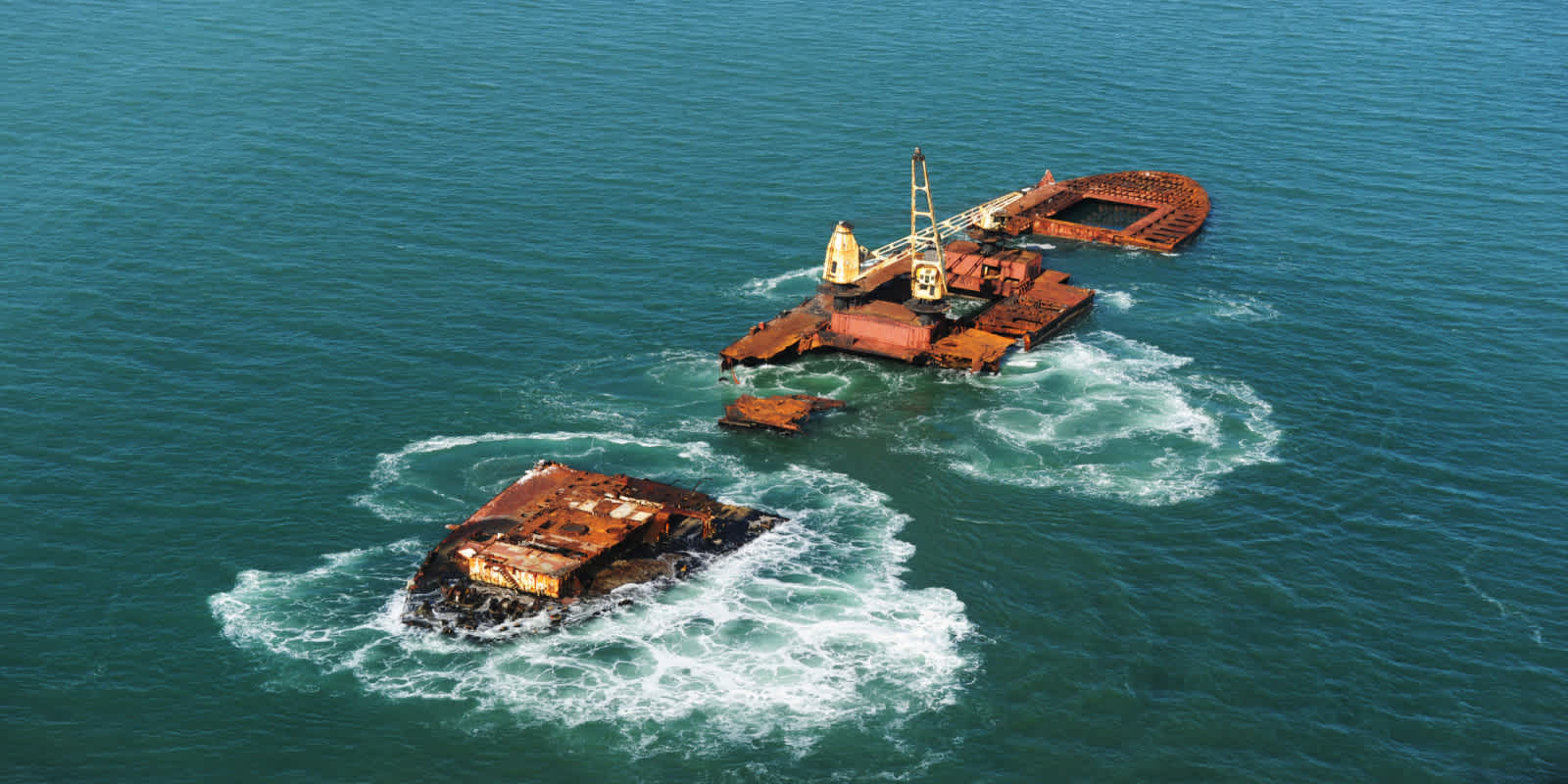
June 9, 2022
Reality Check: How Much Cargo Insurance Do You Really Need?
Reality Check: How Much Cargo Insurance Do You Really Need?
Confession time: Flexport’s cargo insurance team is pretty passionate. This might not be the coolest thing we've ever admitted, but educating clients on exposures they’re unaware of and building policies to fit their shipping schedules can save you a lot of headache down the road.
Is there any other step you can take to help reverse financial loss when your supply chain goes awry? Nothing else comes to mind. Only cargo insurance.
Risk Mitigation Made Easy
Let’s answer the real question. How much cargo insurance do you truly need?

You probably need more than you realize—Flexport finds that up to 80% of shippers are underinsured—but policies probably cost way less than you think.
A good rule of thumb is covering 110% of the Commercial Invoice value, plus freight and duties on all your shipments. Rates vary, but are usually a fraction of a percent of this insured value. Rates can be even more economical when shipments are bundled in an annual policy.
Here’s some math to illustrate our point: If something happened to a shipment of $100,000 worth of goods that you’re moving, and you had a 10% net profit margin—without insurance you would need $1 million in sales just to recover the cost of the lost shipment.
In this scenario, you’re unlikely to replace the lost goods and sell them at the same retail prices before your demand curve plummets. Seasons change. Life goes on. Your company just lost a lot of money.
With cargo insurance, it’s a wildly different scenario. You could have paid a few hundred dollars—a fraction of laded cost—to fund a new purchase order. With Retail Value coverage, for just a fraction more, you could have recovered the full retail sales price and kept moving forward.
We should all have that kind of luck—except it’s not luck. It’s smart risk mitigation.
Scalable Cargo Insurance for Your Unique Needs
Anyone can take advantage of cargo insurance strategies with Flexport. If you typically work with a mix of logistics providers to move your shipments, you can still get insurance through Flexport for all your shipments. Insurance is immediately available through our instant quote tool and, if you choose, you can set up a personalized dashboard in Flexport’s insurance application. In the dashboard, you can file and track claims, access claim mitigation instructions, and chat with adjusters.

Here are a few ways you can custom-build cargo insurance policies to protect your company’s investments:
- Scale your insurance to your supply chain. Flexport offers both annual and per-shipment cargo insurance, plus additional solutions for agility in a rapidly changing supply chain climate.
- Get coverage no matter who ships your cargo. Flexport’s tech-first approach to insurance applications and claims can complement your current modal mixes and supply chain partnerships, even if you use other logistics providers.
- Build additional value into your cargo insurance. Select policies to help you recover retail value in case of loss or inventory coverage to safeguard your goods while they sit at a warehouse. For high value goods that require true end-to-end coverage, we can package a policy to cover the entire shipment journey from supplier to the destination warehouse.
At growing companies, you need to invest a lot of capital upfront to establish high-quality suppliers, launch new products, and transport goods to market. Underinsuring your shipments puts cash flow at risk and limits ROI at a critical stage of growth.
Insufficient insurance can also lead to the hassle of trying to settle claims with an insurer who is not familiar with logistics. Flexport has the expertise to file all claims with the right stakeholders, getting you the fastest payout while sparing you the need to become an expert in the many nuances of global trade.
For a quick start, get a quote for an annual cargo policy or to insure by the shipment.
Hard Truths You Can Handle
From cargo-ready date to final delivery, your cargo passes through many hands: loading and unloading from trucks and containers, through ports and exam sites, and through warehouse after warehouse.
Each step is necessary for your merchandise to ultimately reach you, but having your goods move through so many checkpoints increases the chance of damage.
Catastrophic incidents happen with greater frequency now. The increase in these incidents is partially a result of supply chain infrastructure faltering under the crush of consumer demand. As ships get bigger and containers are stacked higher, the likelihood of loss increases.
Cargo insurance can help limit the impact of these incidents in a variety of ways.
Everyday Accidents Can Get Complicated Fast
Packaging Digest (yes, it’s a real publication—and we read it) reports that anywhere from 2% to 11% of units arrive at distribution centers with case damage. Flexport data indicates the potential impact of that damage to businesses. Over a third of cargo insurance claims arise from rough handling or crushed or damaged goods.

Most cargo insurance claims arise from damaged goods, and the impact can cascade quickly from there. If a pallet arrives and there is visible damage, your staff now has to go through all of the product on that pallet to make sure there is no hidden damage to the remainder of the goods before shipping off to the end customers. That can take a lot of time and money.
Another common source of loss is shortage. Miscommunication or missing documentation can lead to your container arriving with missing cargo. Importers bear the responsibility of filing a claim, but this requires detailed photographs submitted to the right responsible party within a timeline that varies by mode and may even vary by carrier.
A simple typo upstream can quickly snowball into a complicated, urgent claims process by the time the shipment arrives.
Losses Can Be More Expensive Than You Expect
Note here that, even though we’ve identified crushed or damaged goods as the main driver of cargo insurance claim volume, it’s only the third highest claim value.
That’s because not all types of losses end up impacting your claims, liability, and finances the same way.

The global impact of cargo losses is approximately $50 billion annually. It isn’t just the value of cargo—or even sales, which you can make up with retail value coverage. It’s everything else that happens when you suffer a loss, too:
- Additional manufacturing costs
- Expedited freight charges to replace goods
- Additional management labor hours
- Repeat or damage-control sales calls
- Incremental investigation costs
In instances where your inventory was on its way to a retail partner you could experience even greater loss. Many high-value retail partnerships have stringent frameworks that may be non-negotiable. They can include heavy documentation on the rules and regulations of distributing to their networks.
If your cargo is lost or damaged, it can be difficult or impossible for you to satisfy these frameworks without the funds to quickly replace a purchase order.
Built-In Coverages Don’t Cover That Much
All carriers limit their liability. Their limits are based on the weight of the damaged cargo or the number of packages that are damaged, which often has nothing to do with the actual value of the cargo.
For instance, one shipping container could include high-value luxury furniture or low-price t-shirts. When you consider fixed carrier liability against the variable value of your goods, you can see why it usually isn’t sufficient.
General Average Turns Your Cargo into Collateral
General average is an ancient maritime principle that kicks in when a voluntary sacrifice of part of the vessel or cargo is necessary to save the whole in an emergency.
It arises from the idea that shippers and vessel owners are entering into a joint business venture. If it weren’t for the shipper’s cargo, the vessel wouldn’t be undertaking a potentially dangerous voyage, so shippers share in the liability for loss.
Centuries later, General Average persists. If a ship experiences the need for extraordinary sacrifice or expenditure at sea, the vessel owner may declare General Average for the benefit of all cargo owners. We’re mainly talking about containers going overboard these days, but it can also include situations like vessel fire or extended delay.
When these situations occur, all cargo owners with freight remaining on the vessel are required to share in the cost of the expenditure before their goods are released.

The big General Average takeaway? If you don't have a cargo insurance policy that will provide you with the appropriate General Average guarantee documentation, you will probably have to post cash collateral or go to your bank to obtain a Letter of Credit to back the guarantee.
Otherwise, your goods become collateral for your General Average obligation—and that means you won’t get them back soon.
With Flexport, when a carrier declares General Average, you don’t have to do anything. Flexport submits the necessary documentation on your behalf to trigger the release of your cargo quickly and easily.
Just because you aren’t dealing with a loss-related incident now doesn’t mean you never will. Real talk: The outcomes after a loss are largely dependent on your cargo insurance. Get a cargo insurance quote to protect your investments now.



